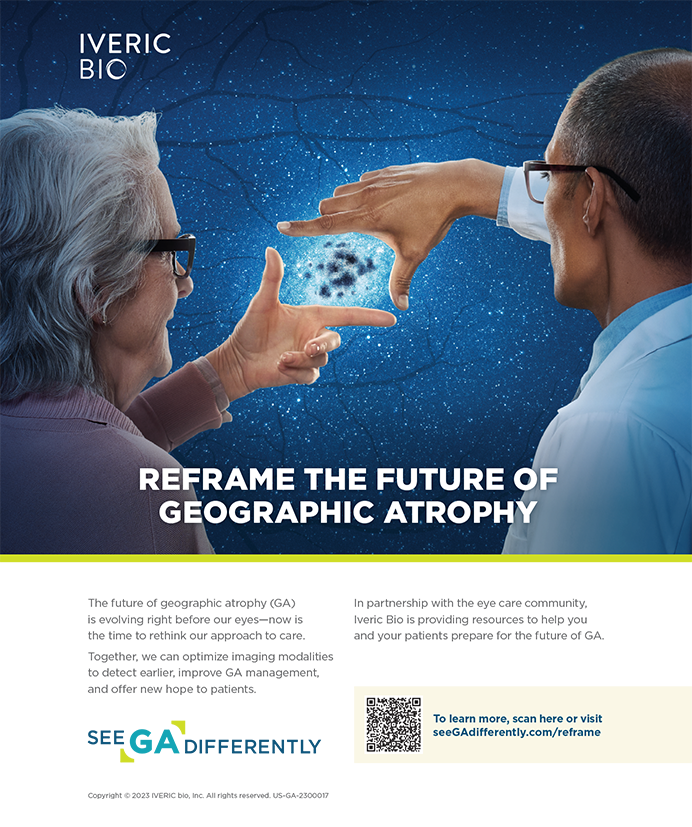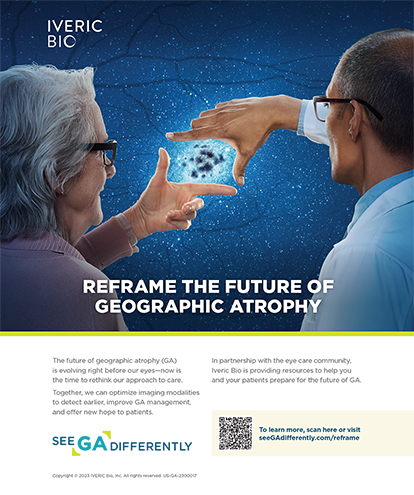A 57-year-old man was referred for cataract surgery. He had suffered a bungee cord injury to his right eye 15 years earlier. Although the globe did not rupture, he developed a traumatic cataract that was left untreated.
Upon examination, the patient was essentially monocular with a very dense, brunescent cataract in the injured eye. About 50% of the zonules had dehisced, and vitreous was coming around the area of dehiscence into the anterior chamber, causing decentration of the crystalline lens. There was also some moderate phacodonesis (Figure 1).
Managing such a case entails several considerations. My primary concern was whether I would be able to stabilize the capsular bag and safely remove the cataract without causing nuclear fragments to fall into the vitreous, necessitating an emergency vitrectomy. Asking a retina colleague to perform a vitrectomy and lensectomy would certainly have been a reasonable approach. I felt confident, however, that with the use of the WhiteStar Signature System with Fusion Fluidics (Abbott Medical Optics Inc.), I would be able to safely and effectively perform phacoemulsification and an anterior vitrectomy on this patient. Minimizing trauma to the corneal endothelium is also a major concern, and a good dispersive viscoelastic is also essential to a successful complex case.
Tackling the case
First, I stained the anterior capsule with trypan blue, performed the capsulorhexis, and then centered and stabilized the capsular bag using Mackool Cataract Support System (FCI Ophthalmics, Inc.) (Figure 2).
My phaco technique of choice is a vertical quick chop, and I typically use the venturi pump during phacoemulsification. The Signature system offers both peristaltic and venturi pumping modalities as well as the ability to switch back and forth between them within a case, thanks to the platform's dual-pump Fusion Fluidics.
In this case, I used the venturi pump for the entire procedure, with vacuum and aspiration acting as one modality at a setting of 225 injected a dispersive ophthalmic viscosurgical device (OVD), EndoCoat (Abbott Medical Optics Inc.), to protect the iris and endothelium and then proceeded to chop and remove the huge, leathery nucleus. I had to stop frequently to check for leaking vitreous and switch from phacoemulsification to anterior vitrectomy, as I needed to remove the vitreous coming around the lens. Ultimately, the nucleus was successfully emulsified, and I/A proceeded uneventfully.
Prior to IOL implantation, I used a capsular tension ring to distribute the tension of the capsular bag and center it for the IOL's implantation. I then instilled a cohesive OVD, Healon GV (Abbott Medical Optics Inc.), to maintain space, push down on the iris, and delineate the IOL haptics during iris fixation.
In this particular case, I implanted an aspheric, three-piece Tecnis Acrylic IOL (ZA9003IOL; Abbott Medical Optics Inc.). I have found this lens to be an excellent choice for complicated cases involving weak zonules, because it can be placed in the capsular bag or ciliary sulcus, and it acts almost like a capsular tension ring to evenly distribute capsular tension. Additionally, due to the lens' asphericity, a slightly decentered IOL-capsular bag complex will not affect the optical quality. Finally, a simple iris suture was placed to correct the pupil and iris atrophy from the original trauma (Figure 3).
Although this case was challenging, everything went according to plan, and a full vitrectomy was not required. Postoperatively, the retina looked quiet, and the IOL was very stable and centered. Additionally, the cornea was clear even at the postoperative day-1 visit, which I attribute to the powerful dispersive Endocoat that was used. At the 3-month follow-up visit, the patient's BCVA was 20/25. He reaped huge benefits in terms of visual acuity and quality of life from the successful removal of his traumatic cataract.
Discussion
As I always instruct residents, the surgeon should be like a ghost in complex cases: in and out of the eye as gently as vapor, with minimal movement to alert the vulnerable eye to his or her presence. Although some ophthalmologists consider venturi-style phaco to be too fast or powerful for complex cases, I find that it is actually advantageous in terms of safety. Specifically, I can hold the chopper and the phaco tip centrally and let the vacuum-driven venturi pump draw the segments to the tip without the need to manipulate the lens or fish around in the periphery.
I believe that transversal phacoemulsification is one of the biggest improvements in cataract surgery in the past decade. In my hands, the elliptical movement of the Ellips FX (Abbott Medical Optics Inc.) handpiece dramatically decreases chatter and increases efficiency and followability, particularly when paired with venturi fluidics.
Conclusion
With very hard nuclei and weak zonules, as in the case described herein, surgeons need to know that they will be able to maintain a stable anterior chamber, make efficient use of ultrasound power, and safely remove the cataract without resorting to a full vitrectomy. The combination of venturi fluidics, transversal phacoemulsification, excellent viscoelastics, and a versatile three-piece aspheric IOL gives me added confidence in approaching such a case.
Marjan Farid, MD, is the director of cornea, refractive, and cataract surgery, vice-chair of ophthalmic faculty, codirector of the Cornea Fellowship Program, and assistant professor of ophthalmology at the Gavin Herbert Eye Institute at the University of California, Irvine. She acknowledged no financial interest in the products or companies mentioned herein. Dr. Farid may be reached at (949) 824-2020; mfarid@uci.edu.


